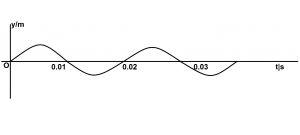The content is just an excerpt from the complete note for SS2 First Term Physics Lesson Note – Position; Distance and Displacement. Check below to download the complete DOCUMENT
WEEK TWO.
TOPIC: Position, Distance and Displacement
CONTENT:
- Concept of position
- Location of point on a Cartesian plane
- Distance
- Estimation of distance between two point on a Cartesian plane
- Displacement
- Difference between distance and displacement
- Frame of reference
PERIOD ONE: POSITION
This is the location of a point/object with respect to a reference point. The position of a point in space is defined in terms of the distance of the point from the reference point (which is sometimes called ORIGIN). In physics, the position of an object in space is represented in a coordinate system. There are three main types of coordinate system for representing the position of an object in space:
- Cartesian coordinate system
- Spherical coordinate system
- Cylindrical coordinate system
Of all these, the Cartesian coordinate system is the most commonly used.
Cartesian coordinate system:
This is also called the rectangular coordinate system. This consists of two (or three) mutually perpendicular axes. The Cartesian plane in two dimensions consists of two mutually perpendicular axes: w
- the horizontal axis (also called the X axis or the abscissa)
- the vertical axis (also called the Y axis or the ordinate).
To gain full access to the note: DOWNLOAD FILE




